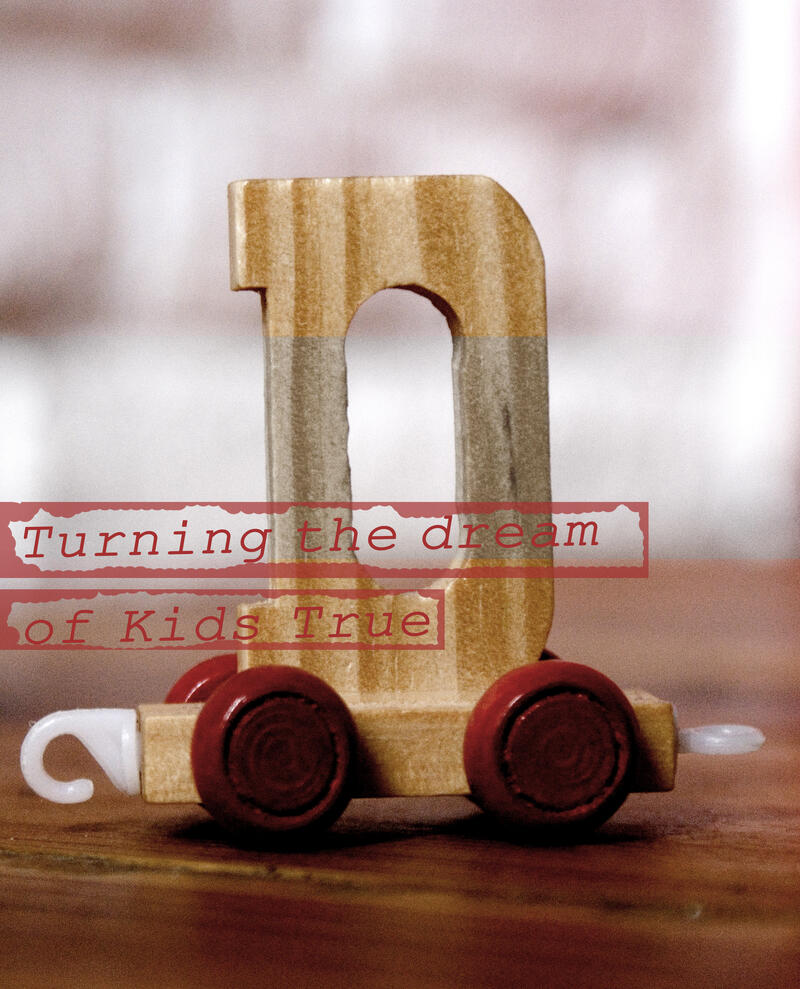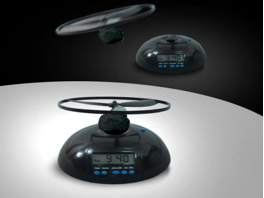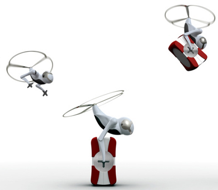Table of Contents
Living a Robot Cargo Cult
(by Rula Sayaf)
Imagination or Knowledge?
“The true sign of intelligence is not knowledge but imagination,” emphasized Albert Einstein on many occasions constantly implying that imagination is the compass towards creating the future.
Without knowing Einstein, the Melanesian people used their imagination and not their knowledge to create the cargo cult. This new ritual religion started after the Japanese and American armies landed on the Melanesian land with the big war machines. The people were bewildered by the stream of new products they never seen before. By the end of the war, this stream stopped and everything vanished without any logical reason for Melanesians. Trying to bring back the wealth and the various manufactured goods the Japanese and Allies of the World War II brought with them to these Islands. The simple Melanesian didn't understand the drastic changes those made in their small communities during the war. Neither did they know what happened and why they were cut from the stream suddenly when the war ended.
Melanesians imagined that rituals and magic would bring them back prosperity again. As a result of their thinking they have built life-size raw imitations of equipments the army soldiers used. They crafted control towers, built planes with straw, carved the jungles to make landing space, composed radios with coconuts and straw, and with wood they had headphones. Interestingly, they mimicked the behavior of the US army individuals as they saw it. From sitting in the control towers to waving landing signals in the runway, ending with performing army parades. Unsurprisingly, no planes returned back and nothing happened again.
Whether it was out of truthfulness or scamming, the leaders of the tribes lead the people to create imaginative interpretations of unknown technologies. Due to the lack of knowledge and their ambitious imagination about human aeronautical engineering they assumed that the planes were gods that could be summoned through rituals inspired by the mere desire of getting in contact with what they want.
Melanesian culture at a first glance might seem far from post-industrial contexts, yet this example relates to the issues of cutting edge technologies and robotics researched in the project LIREC.
Talking about technology, many of you will remember Marvin, the Paranoid Android from the “The Hitchhiker's Guide to the Galaxy”. Marvin suffered from depression as he had a planet-sized incredibly intelligent brain and no task could occupy it for a fraction of time. Despite the sad story and my personal empathy with Marvin, current facts and research suggest that a robot with depression is not foreseen on any of the horizons of technological advances. It is only the imagination of the writer that allows this kind of robotic technology to exist.
Imagination and storytelling can be a well of inspiration for robot scientists and the public alike. The problem arises when scientists take these inspirations too literally and apply them in the context of robots research and industry. Hence they attempt to create hyper-realistic human-like robots with all cognitive abilities of a human being. In fact, some researchers are more driven by the fictional robots than with creating their own imaginary robots based on factual capabilities and boundaries of the current and emerging work in the domain.
Imagination can drive innovation up to a certain point, but it should be in mutual interaction with related knowledge and design. This is a critical point needed to complete the picture: in robotics, imagination can inspire research if and only if based on solid knowledge. Back to the story of the Melanesians – with sufficient knowledge, they could have built and culturally adapted airplanes and negotiated with the humans on the other side of the ocean to ship cargo to their islands. Similarly, androids of the future would have sound functionalities, abilities, and symptoms of sickness (if this is appropriate) and will be empirically feasible to create.
Ideally, if imagination is incorporated with sufficient amount of technological, social & design knowledge, then we might meet a robot that behaves as its cartoon version from our childhood, wouldn't that be joyful?
Can Childhood Dreams Come True?
This question is pretty hard to answer when fiction, especially in cartoon series and films, is constantly diverging from the research paths and perspectives. If both lines are totally informed and relatively in synchrony with each other, then children could have their childhood heros as real robot characters in the future.
LIREC doesn't investigate the public fiction and media as much as it focuses on what could be done in research in order to keep in focus on what makes sense to do, to avoid drowning in fantasies and getting side-tracked from achieving the goal. Therefore we start with the premises of research. It is the researcher's responsibility to be honest and clear in discussing the planning for future technology. Some researchers are biased, attempting to literally recreate robots from science fiction. Consecutively the concept of Robot Cargo Cult originated from this issue SICS (Fernaeus, Jacobsson, & Ljungblad, 2009). This metaphor describes how popular culture and media sometimes influence the understanding of robots and their capabilities, both for the researchers and the public. In the absence of sufficiently clear information about current scientific research in the mainstream media, what most of us know about robots comes from non-scientific and non-systematic sources; resulting in at least two problematic outcomes. On the one hand, it can lead research towards dead ends and incomplete systems, or even freezing the process after the researchers realize that the goal is unachievable. On the other hand, the view of 'emotional' robots in popular culture and fiction can lead to disappointments of the public – the current generation of robots cannot be depressed, or otherwise emotional.
In short, the robot cargo cult can be amusing, but it can also bring damage and frustration to both researchers and laymen. Luckily with open minds and empirical knowledge we can avoid it. Next, we will discuss further the factors affecting this phenomenon.
Research Ethics
LIREC looks at crucial ethical issues of living together with robots over a long period of time. Sharing your life with a robot raises many questions in the public. Like is it safe to live around robots? What if the robot is not trusted to hold a kitchen knife? For this reason the public understanding of robots should be informed about the real research advances and that both research and popular culture could be mutually affecting each other, to reach a more sound, socially beneficial understanding about robotic technology.
In the earlier mentioned work of SICS the question “Are we living a cargo cult?” was raised. The answer was and still is: yes. The common examples that lead LIREC researchers to emphasize the importance of ethics studies to avoid the robot cargo cult are many (LIREC Deliverable 10.1: Preparatory studies and ethics for companion design). Two examples are given here to show how the research & the public can be fooled into a robot cargo cult, which can only lead to disappointment down the line.
Different Paths to A Robot Cargo Cult
Science and Research Path
Within the HRI methods that might lead to the robot cargo cult is Wizard of Oz (WOZ) method. It is an experimental method that is useful in many ways and different approaches in psychology, ergonomics and usability engineering. In robotics it is used in different studies including collaboration, perception, rehabilitation and other human-robot interaction issues. It is an effective method in various domains. However the danger of the Wizard of Oz is that it sometimes creates the illusion that the gap between implementation and design is very small; and that the implementation of the theoretical system in the experiment would be easy and straightforward, which is definitely not the case. In these situations the Wizard of Oz method is like food for the robot cargo cult, and needs to be dealt with carefully.
Disappointment Path
SICS LIREC Deliverable 10.1 started a long-term study on Pleo, the baby dinosaur as a companion to live with. Pleo is one of the most sophisticated electronic products that simulate the behavior of real-life pet. Pleo joined the life of four Swedish families, who periodically reported their experience about living with their electronic pet, Pleo.
In the research community it is well established that we have some expectations about technology, which in turn affects our experience with this technology (McCarthy & Wright, 2004). The families expressed confusion related to having high expectations of intelligent behavior that they didn’t experience in reality. They were disappointed when Pleo was not as interactive as they had expected it to be. They found it in a way “stupid” compared to what they imagined a robot would be. For them, Pleo should have had a much more animal-like behavior. The irony is noticeable in the difference that from a technical point of view Pleo is an advanced pet-like robot, but from a public point of view Pleo is a rather dull pet-like robot.
Distinguishing between our high expectations and the reality of the present day robots is important to be able to resolve the confusion with robots like Pleo. It might help if robotics researchers would become more engaged in public media and events, write and talk about today's advances in robotics outside of the academic and industrial circles. Being more clear and open about current research would support public understanding and knowledge, thereby re-adjusting unrealistic expectations. From such a solid knowledge foundation, we can steer the development of the field while still enjoying inspiring, ridiculous, or plainly fantastic sci-fi visions of possible futures.
Fighting the Cult Continues
To conclude, the work will continue to avoid and fight robot cargo cult by focusing on finding ways of talking & writing about robotics research and presenting it to the general public and the media. On the other hand, users are responsible to keep informed about what is realistically possible for robotics technology today and in the near future.
This way, we might get more realistic expectations of what is possible. As seen in the studies of Pleo, too high (or even unrealistic) expectations can fundamentally affect the interaction in a negative way, since people easily get disappointed.
At the end, we invite the public to base their expectations about today's robots on more solid knowledge about the field. At the same time, we urge researchers to be inspired and innovative, while being firmly grounded in scientific knowledge and social context they work within. Perhaps this will help dissolve the problematic robot cargo cultism.
Mocking Future Designs
A group of design students let their imagination loose on the question what kind of technology we might be surrounded with in the near future. Below you can find a few mock-ups.
You can also check some designs of future robots thought to be handy in the future




